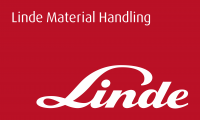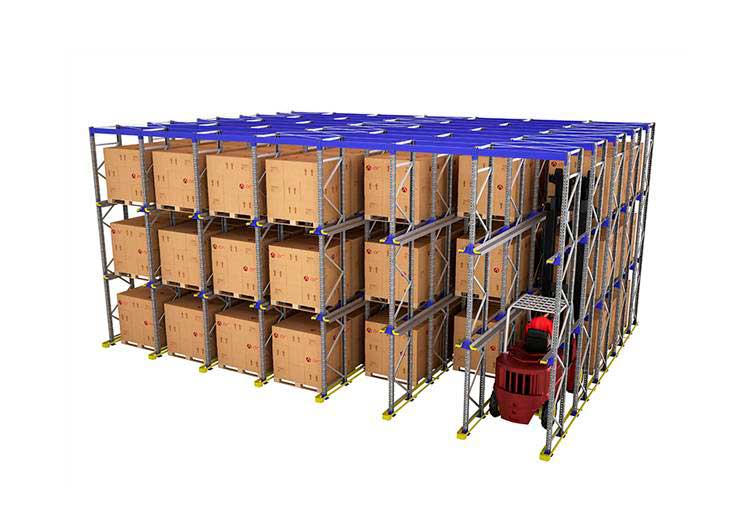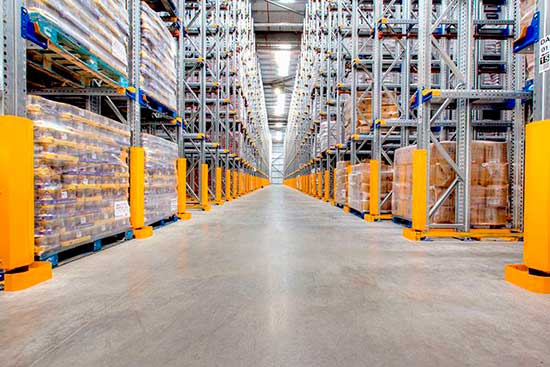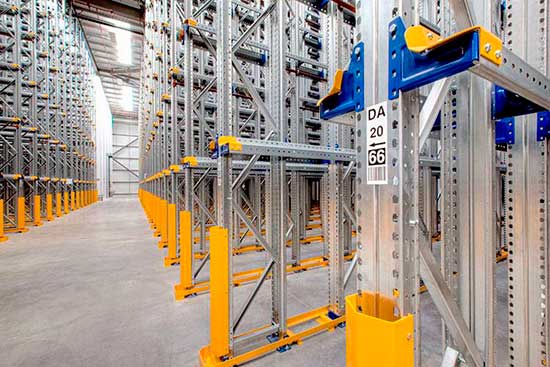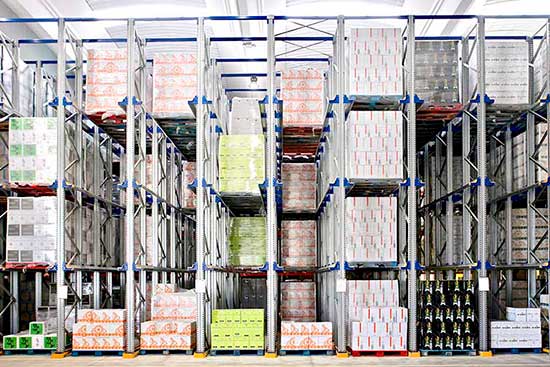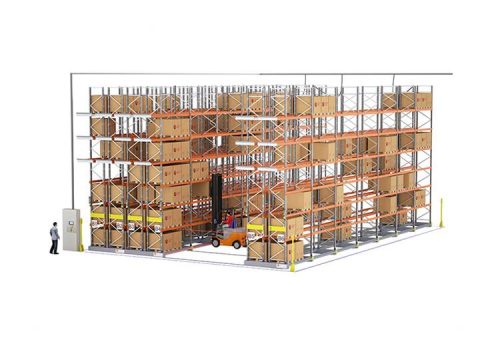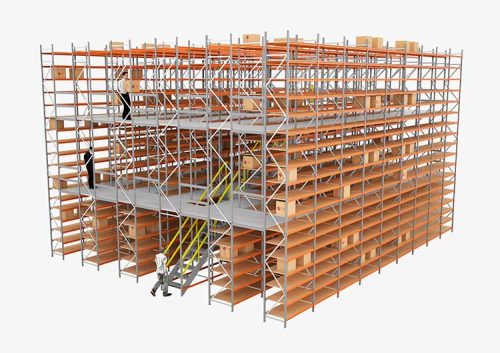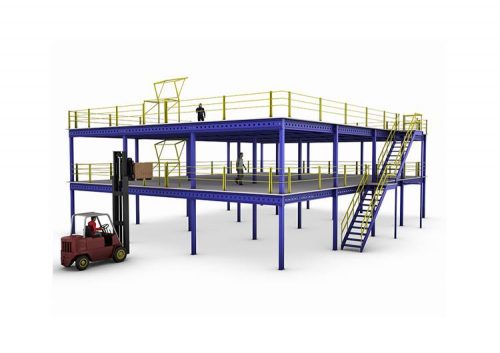The Drive in Racking System is a high density storage solution that maximizes available space and height in the warehouse by reducing the forklift operating aisles.
It is made up of an easy-to-assemble and -reset modular structure, which makes it easy to maintain.
Compact racking can be either Drive in racking, with only one access aisle, where the last load in is the first one out, or Drive through racking, with an entrance and exit, where the first load in is the first one out.
It is the optimal and most common pallet storage system when you need to store homogeneous products with a large number of pallets of the same reference.
This compact system is appropriate where space utilisation is more important than selectivity of stored loads.
Advantages
- Space optimization above 80%.
- Low maintenance and low assembly costs make this system one of the most cost-effective systems.
- Structure compatible with other storage systems.
- Provides maximum performance, and utilisation can be over 80% of the available space.
- Enables clearly arranged logistics management with full control of inventories as well as traffic and service flow.
- Designed to allow for quick reconfiguration of the structure for extension or change as needed.
- Ideal for storing low-rotation loads of the same type.
- Eliminates the service aisles found with a conventional pallet racking system.
- Maximised storage floor and height.
- Easily assembled modular structure.
- Trucks enter the system for loading.
- Includes various accessories to increase safety.
- Maximisation of space
- Products of the same type
- Low stock rotation
